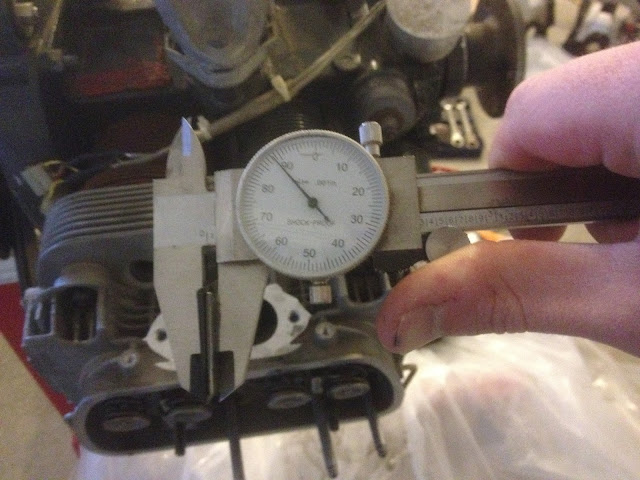I've been stuck trying to find the right tools for the last week or so, and then trying to find the time, but I finally made some progress. The pictures below show a collar assembly on the front of the motor, behind the prop hub. Apparently this setup is an anomaly - no one I spoke with was able to identify it. There are 4 screws that hold the front collar onto the back collar, which has one screw into each side of the case. Once I got the right size hex key, these came off and the case came apart.
These two collars house an oil seal around the crank shaft where it exits the case. My first inclination is to replace the seal, but I'm not sure what kind of damage I might do removing the prop hub. I'll have to think about it.
Once the case was split, I pulled all the cam followers and labelled them so I could replace them in the same locations. I'll be taking a lot of pictures once I've cleaned things up, but the camshaft looks like it's in great shape, so that and the followers will probably stay.
The inside of the engine wasn't as pretty a machining job as I'd expected, but everything turned nice and smooth when it was all together, so I'm not too worried about it. I haven't found a reason for the fine metal shavings yet, which makes me uneasy.
This is where I left it. There are only a couple of things left to do on the case before it can be cleaned up and inspected, and I don't expect the crankshaft assembly will be difficult to take apart. After that I can begin blueprinting, clean and inspect, order my parts, and put this thing back together.


























